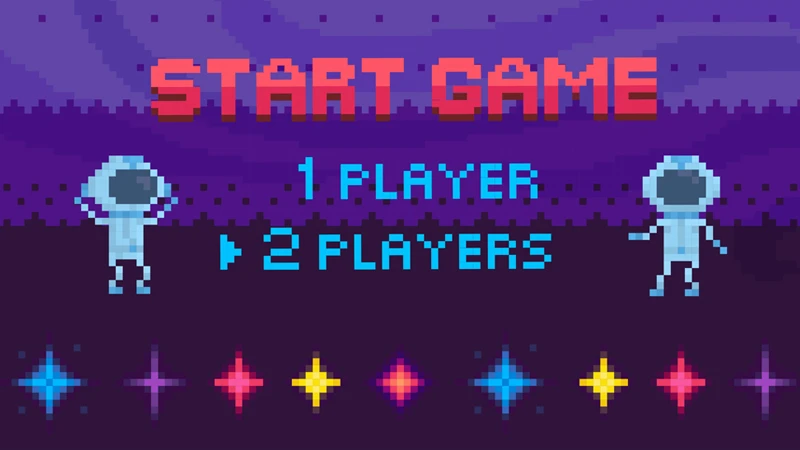- Insights
- Customer Experience
- Article
Launching a new game with player support in mind

For better or worse, no games launch goes the way it was drawn up, says Pete Milovcich, vice-president of business development at TELUS International. “Some new titles catch fire right away and leave studios scrambling to support the momentum. Others catch fire in a very different sense.”
To counter the unpredictability, create the conditions that ensure your studio is able to adapt. “There’s going to be bugs, and there’s going to be patches. It’s about how you deal with them, especially in the first 30 days after launch,” explains Milovcich. “If you get the early experience wrong and players leave, it’s difficult to get them back.”
So how do you maximize your chance of success? The following best practices are borne out of TELUS International’s direct partner experience collaborating with over 13 diverse games companies to launch more than 40 specific titles.
1. Put the right support team in place
As Milovcich puts it, “Launching a new game is a high-stakes moment for any studio: Missteps in the launch process can be costly.” Today, streamers carry untold influence, and they’re never more likely to be trying your title out than when it first hits the market. Thoughts about your game and its player experience will be shared across social media platforms, and negative word-of-mouth can discourage new player discovery.
Addressing issues as quickly and effectively as possible is essential to keeping players engaged. For that, you need an elite team of player support professionals.
Ensure your support team has the technical literacy to understand player challenges and provide them with support, as well as the skills to communicate common pain points back to other teams within your studio. Before launch, all team members should spend a significant amount of time playing the game. Their familiarity with the game, its language and the culture of your studio will help deliver higher-quality games customer service.
2. Create a flexible support framework early
Expecting the unexpected and embracing the need for adaptability can do wonders in the lead up to a launch. Rather than a rigid plan, there’s benefit in creating a flexible support framework to manage the experience of your would-be players. And for that, an experienced partner that’s able to provide solutions and scale when and how you need them is invaluable.
That’s true whether you’re a Triple-A game company with a proven track record for new releases, or an indie studio launching your first title; you want to have the technology, processes and organizational structure in place in advance. Relative to other aspects of the support function, these take more time to design and implement and can represent a heftier investment. In a post-launch environment, resources like time tend to become increasingly sparse.
When you’re creating your framework, we can help you think about the ways players will be able to access support, what that support experience will feel like, your voice and tone, and more. The player experience should feel consistent and on-brand no matter the channel.
And while much of your attention upon launching will be on metrics like downloads, the number of active players, and retention, we can help you design the right key performance indicators (KPIs) for the support experience. As the saying goes, you can’t improve what you don’t measure. With clear, considered KPIs, your support team will be able to see where pain points are and take proactive steps in addressing concerns.
3. Share information as you adapt
You don’t need to be clairvoyant; you need to be adaptive. A big part of that is about where and how you direct information.
Beyond addressing bugs and any individual player support items, it’s critical that you maintain prompt and open lines of communication with your player base. Simply put, your players need to feel heard. Leverage the forums, streams and social media channels where your players gather and give them honest updates about the status of issues and your plan of attack.
For your developers, gleaning what those issues are, and even insights into how they may be addressed, can be informed by qualitative Voice of the Player sentiments relayed by your support team as well as the quantitative metrics that you’re tracking as a matter of course. Voice of the Player — and metrics like concurrency, session time (length), total time spent, quests/missions completed, zones visited, monsters killed, other players interacted with, friends made, number and frequency of deaths in game, the items you get, queue size and wait time, install rate and conversion rate — come together in countless data points to tell the story of your game’s performance.
4. Know when to bring on a partner
When your studio finds itself struggling to keep up with the needs of players, or you need to tackle issues beyond your area of expertise, partnering with a customer experience (CX) provider with games experience can be a lifeline.
“Being an active player in the games industry makes all the difference,” says Milovcich. “While no firm can say they’ve seen everything, we’ve been a partner to established studios and entrants for launches big and small. We’ve been there with studios to prepare and we’ve been there to help them adapt to whatever circumstances come their way.”
At the same time, know there’s a real risk of tying yourself to a plan and a contract that applies your resources in the wrong places. Instead, you want a partner who can support your need for flexibility, one that can help you scale up your player support operations quickly, but precisely when it is necessary. This can eliminate the lag you might experience trying to scale on your own, and it’s also likely to lead to increased efficiency within your existing support team as agents gain exposure to expertise, processes and technology from the CX provider. The ideal is to have a CX partner who is a collaborative consultant in your launch process.
Launch your next title with purpose
Dare to launch, but dare to let go of your initial player experience assumptions. Many of your designs and solutions may be off the mark, at least to a degree. Rather than fixating on the perfect plan, aim instead to give voice to your players in the communities where they spend their time and then adapt with their feedback.
At the end of the day, when you’re launching a new title, taking a flexible approach to support and having a partner at the ready can maximize your chances of creating a game that truly resonates.



